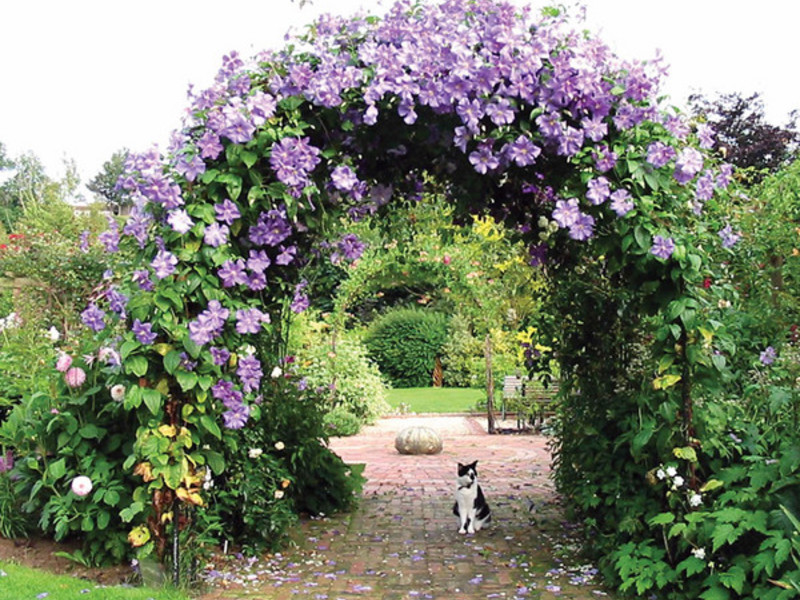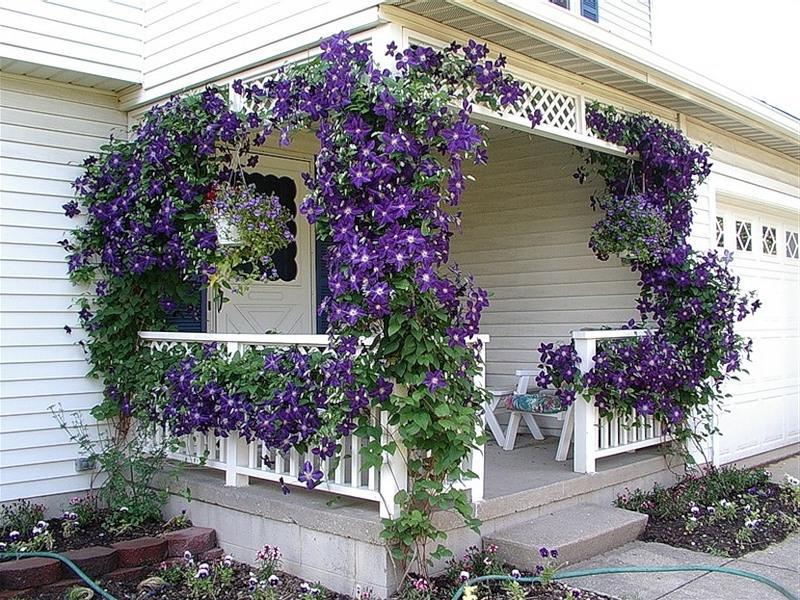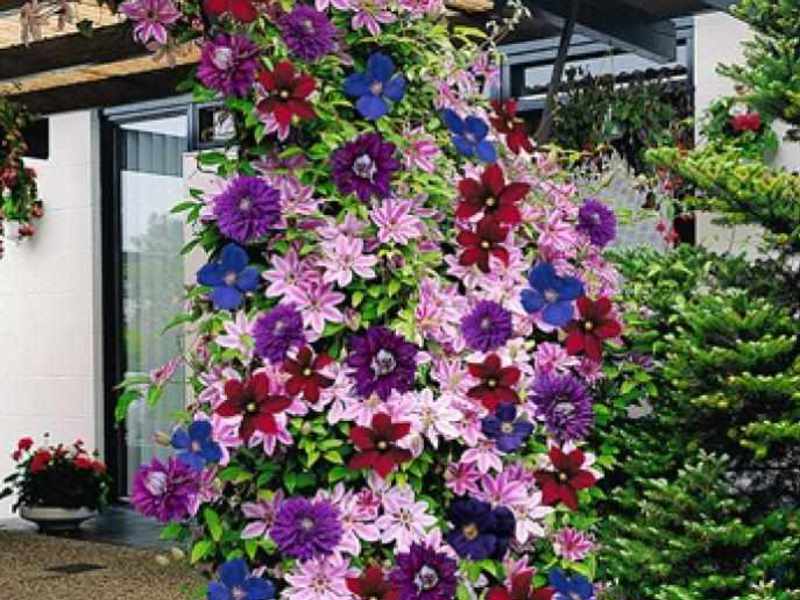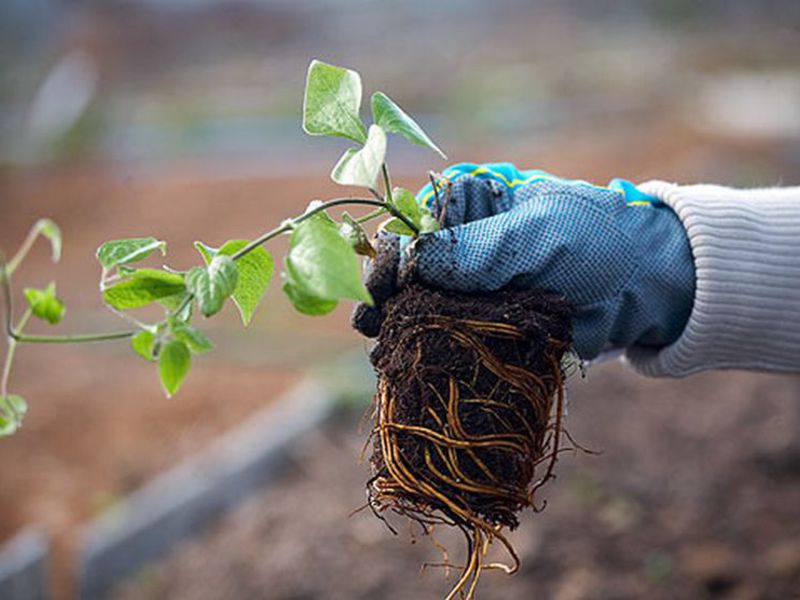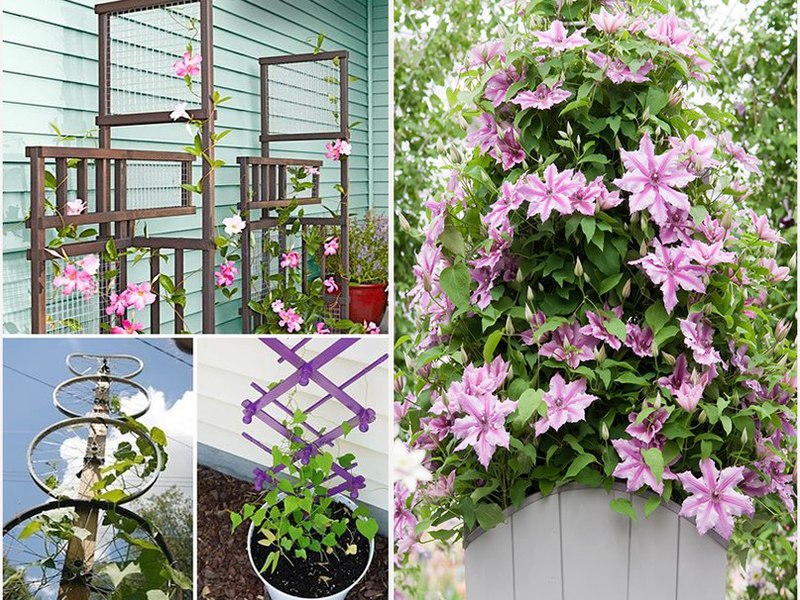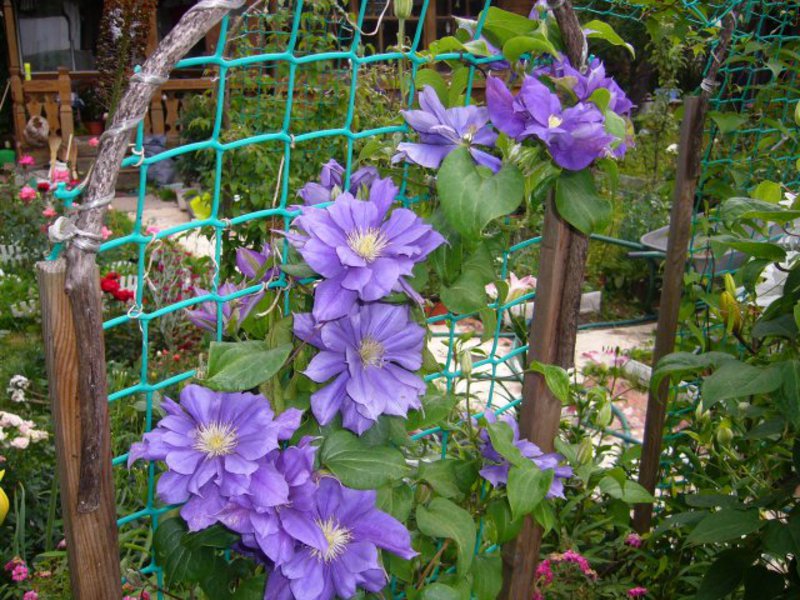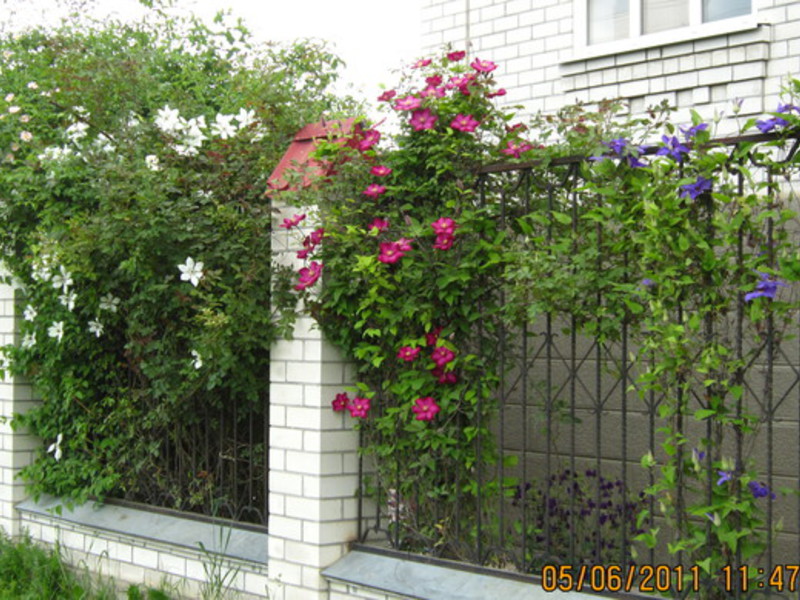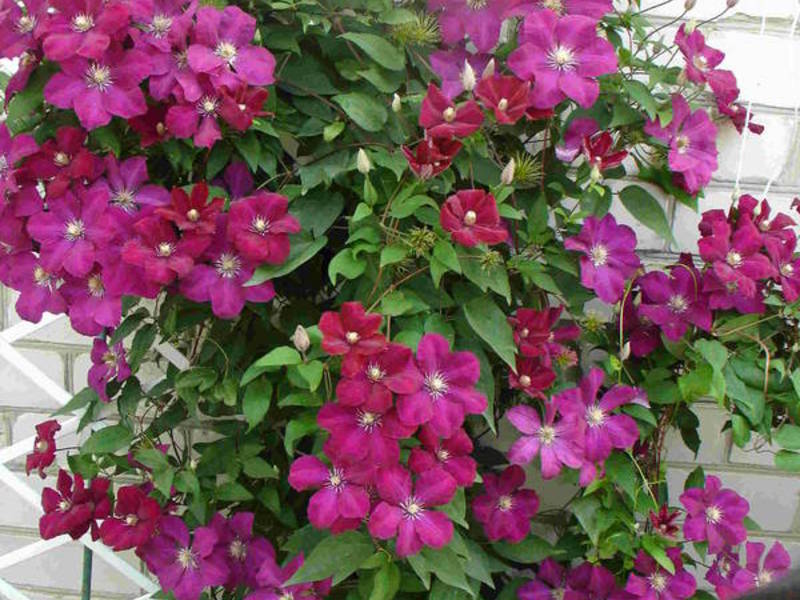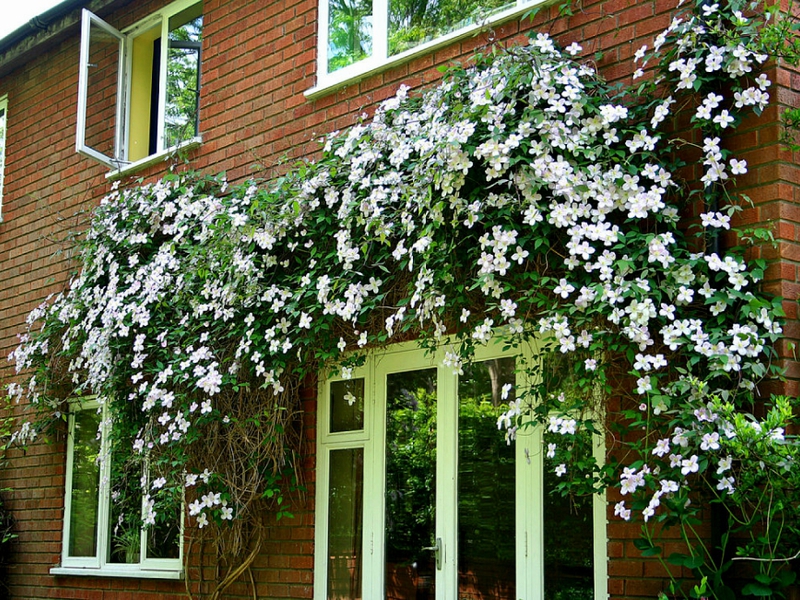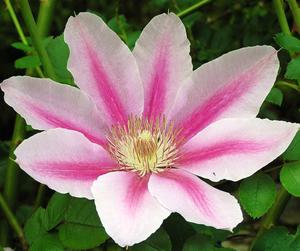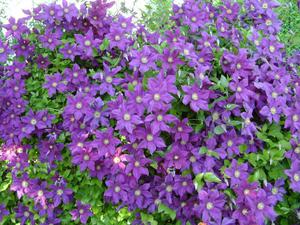Among the many plants that can decorate your home garden, clematis occupies a special place. These delicate and charming vines are found in many gardens. Clematis flowers, large and varied in shades, create a picturesque "waterfall" that flows from a height of two meters. But to get such splendor on your backyard, you need to know when to plant, how to grow and how to properly care for clematis. This is what will be discussed in the article.
Content
Variety of clematis varieties
The flower appeared in Europe at the beginning of the 16th century. Since then, many varieties of clematis have been bred. Initially, it was grown mostly in greenhouse conditions, but gradually the plant "moved" to open ground.
In the wild exists more than three hundred varieties clematis. The plant can be found in almost all climatic zones of all continents, the only exception is Antarctica and the northern regions.
Today there is a wide variety of cultivated clematis. All varieties are collected in specific groups. Let's name the most common ones:
- "Zhakman" is a large shrub vine. Shoots in the first year can reach 3-4 meters. The plant blooms profusely, decorating your summer cottage with beautiful blue-purple flowers;
- "Viticella" is a 3 meter long vine with bright pink-red flowers. Just like the previous variety, clematis "viticella" blooms for a long time;
- "Lanuginoza" is a smaller brother of the clematis family, the length of its shoots rarely reaches 2.5 meters. The flowers are blue and white;
- "Patens" - three-meter vines, covered with large (up to 15 centimeters in diameter) flowers. Flowering occurs only on last year's shoots;
- "Florida" - clematis with flowers of various colors, with a predominance of light tones.
There are other groups of clematis varieties, but in any case, they have similar planting and care recommendations.
Clematis: planting and care in the open field
 Cultivated varieties are quite capricious. Some of them, especially those with taproots, do not tolerate transplant... Therefore, the choice of a landing site should be considered carefully. In order not to be mistaken in this matter, you need to know in advance the preferences of clematis. So this plant loves:
Cultivated varieties are quite capricious. Some of them, especially those with taproots, do not tolerate transplant... Therefore, the choice of a landing site should be considered carefully. In order not to be mistaken in this matter, you need to know in advance the preferences of clematis. So this plant loves:
- A place where the sun is always abundant;
- Protection from winds, both in winter and in summer;
- A place where water stagnation does not occur;
- Light and airy soil.
Since the plant is weaving, it is often planted along the walls of buildings and fencesin. But you have to be careful here. If you plant clematis along the wall of the house, then the distance should be at least half a meter (and it is better to indent one meter). When planting along the fence, you need to choose the right material for making the latter. It is impossible to plant clematis near a solid metal fence. The thing is that in sunny weather, heat will go from the fence. In such a "stove" your clematis will quickly "bake" and die.
Landing
Having chosen a suitable place, you need to dig a hole for planting. Its dimensions will be 60 by 60 centimeters in width and from half a meter to a meter in depth. The last parameter will depend on the proximity of groundwater.If they are located close to the surface, then at the bottom of the pit for planting, drainage is made from broken bricks or gravel.
Next, you need to prepare the soil for backfill. Clematis loves fertile and light soils, therefore, the following components must be present in the mixture:
- One piece of compost;
- One piece of humus;
- One piece of garden land;
- A little sand to create an airy soil;
- Superphosphate (150 grams for each seedling) and dolomite flour (400 grams each).
The planting itself is carried out in spring or autumn. You can do this in the summer, but only if you have purchased clematis planting material with a closed root system (in a "lump" of earth). If you got the seedling in late autumn, then it is better to postpone the planting until spring. To prevent the plant from dying, it is buried in the shade, and special attention should be paid to watering.
Pay attention to the condition of the root before planting. If it is slightly dry, then place the plant in a bucket of cool water. After 6-8 hours, the roots will come to life, and the clematis will be ready for planting in the ground.
Itself landing is carried out as follows:
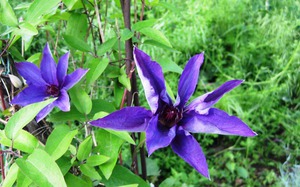 A small mound is formed in the planting pit from the soil mixture;
A small mound is formed in the planting pit from the soil mixture;- A seedling is set on top of the hill. Moreover, its roots are evenly distributed along the slopes;
- Further, the pit is filled up with the remaining soil;
- The last step will be abundant watering.
Clematis is almost a liana; a plant needs support to weave. At first, young shoots need to be tied up. With age, the clematis growth itself will cling to the support, and braid it.
Plant care
Make sure the plant always has room to grow. The support is installed immediately after planting. Moreover, her the height should be about two meters... If you grow clematis near a blank wall or fence, then the support is installed no closer than thirty centimeters from them.
The most important aspect of clematis care is watering. The plant loves moisture, with a lack of it, the flowers grow small and dull. The plant itself begins to wither and dry. In addition, the flowering period is sharply reduced. To prevent this from happening, make sure that the soil under the clematis bush is constantly wet. For this, the flower is abundant watered 1-2 times a week... In dry and hot periods, the amount of watering should be increased to 3-4 per week.
In addition to abundant watering, clematis care also includes other work:
 The day after watering, you need to loosen the ground under each bush. Such an operation will provide air access to the roots and prevent mold from forming;
The day after watering, you need to loosen the ground under each bush. Such an operation will provide air access to the roots and prevent mold from forming;- You need to feed the plant periodically. Clematis loves "rich" soils, so fertilizers are applied at least twice a month. It is best to use organic feeding;
- Remember to remove weeds regularly. This is especially true for young plants, otherwise the weed will simply "clog" the clematis shoots;
- Many gardeners recommend cutting off all flowers in the first year of clematis growth even before they open. In this case, all the energy will go to growth, and the flower will turn out to be more powerful and persistent.
In order for your plant to overwinter well and please you with fresh shoots in the spring, you need to prepare it for this difficult period. When to start this work will depend on the climatic conditions in your region. Experts recommend doing this at the same time as preparing roses for wintering.
Leaves are removed from clematis, cut off dried and spoiled branches. Further, the vine is removed from the support and laid on the ground. After that, the plant is covered with dry grass, fallen leaves, straw or sawdust.
There is another way to cover the plant for the winter. A wire frame is built around the stacked stems, and roofing felt, film or roofing felt is laid on it. Instead of such a frame, you can cover the plant with a plywood box. When constructing such a shelter, one should not strive for absolute tightness, it is better for air to penetrate into the “shelter”.
Clematis perfectly tolerates the winter; damping out is a much greater danger for it. That is why it is not worth delaying the removal of the winter "shelter" in the spring. At the same time, you need to choose the right time when there will definitely be no strong frosts on the ground.
Conclusion
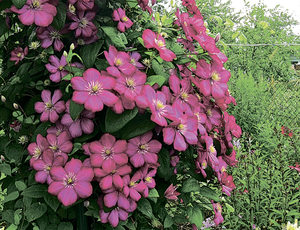 Clematis is beautiful blooming liana... This plant can often be found in garden plots, where it necessarily becomes the highlight of the entire flower garden. Clematis loves bright place where there is no wind... At the same time, you should not plant it along metal fences. In the summer, in such a place, the plant can quickly "fry". Planting is done in spring or early fall.
Clematis is beautiful blooming liana... This plant can often be found in garden plots, where it necessarily becomes the highlight of the entire flower garden. Clematis loves bright place where there is no wind... At the same time, you should not plant it along metal fences. In the summer, in such a place, the plant can quickly "fry". Planting is done in spring or early fall.
Clematis care is not so difficult. It is very important to pay special attention to watering. If moisture is abundant, then flowering will last longer and will be more abundant. In addition, the plant needs shelter for the winter (this applies to the regions of the middle zone of our country). And the rest of the care will consist in the usual work for the gardener - weeding, feeding, pruning. Performing such simple operations, you will receive a bright decoration for your site, which will delight your eyes with its amazing and diverse colors.
